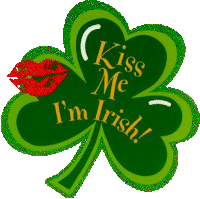 |
An Irish Blessing
May the road rise up to meet you,
May the wind always be at your back,
May the sun shine warm upon your face,
And the rains fall soft upon your fields.
And, until we meet again,
May GOD hold you in the hollow of His hand.
![]()
![]()
![]()
Who Was Saint Patrick
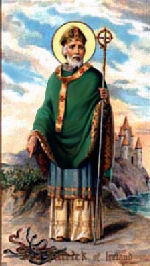 St. Patrick, the patron saint of Ireland, is one of Christianity's most widely known figures. But for all his celebrity, his life remains somewhat of a mystery. Many of the stories traditionally associated with St. Patrick, including the famous account of his banishing all the snakes from Ireland, are false, the products of hundreds of years of exaggerated storytelling.
St. Patrick, the patron saint of Ireland, is one of Christianity's most widely known figures. But for all his celebrity, his life remains somewhat of a mystery. Many of the stories traditionally associated with St. Patrick, including the famous account of his banishing all the snakes from Ireland, are false, the products of hundreds of years of exaggerated storytelling.
- Taken Prisoner By Irish Raiders
It is known that St. Patrick was born in Britain to wealthy parents near the end of the fourth century. He is believed to have died on March 17, around 460 A.D. Although his father was a Christian deacon, it has been suggested that he probably took on the role because of tax incentives and there is no evidence that Patrick came from a particularly religious family. At the age of sixteen, Patrick was taken prisoner by a group of Irish raiders who were attacking his family's estate. They transported him to Ireland where he spent six years in captivity. (There is some dispute over where this captivity took place. Although many believe he was taken to live in Mount Slemish in County Antrim, it is more likely that he was held in County Mayo near Killala.) During this time, he worked as a shepherd, outdoors and away from people. Lonely and afraid, he turned to his religion for solace, becoming a devout Christian. (It is also believed that Patrick first began to dream of converting the Irish people to Christianity during his captivity.)
- Guided By Visions
After more than six years as a prisoner, Patrick escaped. According to his writing, a voice - which he believed to be God's - spoke to him in a dream, telling him it was time to leave Ireland. To do so, Patrick walked nearly 200 miles from County Mayo, where it is believed he was held, to the Irish coast. After escaping to Britain, Patrick reported that he experienced a second revelation - an angel in a dream tells him to return to Ireland as a missionary. Soon after, Patrick began religious training, a course of study that lasted more than fifteen years. After his ordination as a priest, he was sent to Ireland with a dual mission - to minister to Christians already living in Ireland and to begin to convert the Irish. (Interestingly, this mission contradicts the widely held notion that Patrick introduced Christianity to Ireland.)
- Bonfires and Crosses
Familiar with the Irish language and culture, Patrick chose to incorporate traditional ritual into his lessons of Christianity instead of attempting to eradicate native Irish beliefs. For instance, he used bonfires to celebrate Easter since the Irish were used to honoring their gods with fire. He also superimposed a sun, a powerful Irish symbol, onto the Christian cross to create what is now called a Celtic cross, so that veneration of the symbol would seem more natural to the Irish.
(Although there were a small number of Christians on the island when Patrick arrived, most Irish practiced a nature-based pagan religion. The Irish culture centered around a rich tradition of oral legend and myth. When this is considered, it is no surprise that the story of Patrick's life became exaggerated over the centuries - spinning exciting tales to remember history has always been a part of the Irish way of life. )
![]()
![]()
![]()
History of the Holiday
- The First Parade
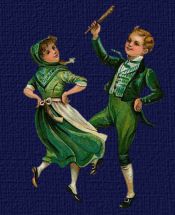 St. Patrick's Day is celebrated on March 17, his religious feast day and the anniversary of his death in the fifth century. The Irish have observed this day as a religious holiday for thousands of years. On St. Patrick's Day, which falls during the Christian season of Lent, Irish families would traditionally attend church in the morning and celebrate in the afternoon. Lenten prohibitions against the consumption of meat were waived and people would dance, drink, and feast on the traditional meal of Irish bacon and cabbage.
St. Patrick's Day is celebrated on March 17, his religious feast day and the anniversary of his death in the fifth century. The Irish have observed this day as a religious holiday for thousands of years. On St. Patrick's Day, which falls during the Christian season of Lent, Irish families would traditionally attend church in the morning and celebrate in the afternoon. Lenten prohibitions against the consumption of meat were waived and people would dance, drink, and feast on the traditional meal of Irish bacon and cabbage.The first St. Patrick's Day parade took place not in Ireland, but in the United States. Irish soldiers serving in the English military marched through New York City on March 17, 1762. Along with their music, the parade helped the soldiers to reconnect with their Irish roots, as well as fellow Irishmen serving in the English army. Over the next thirty-five years, Irish patriotism among American immigrants flourished, prompting the rise of so-called "Irish Aid" societies, like the Friendly Sons of Saint Patrick and the Hibernian Society. Each group would hold annual parades featuring bagpipes (which actually first became popular in the Scottish and British armies) and drums.
- No Irish Need Apply
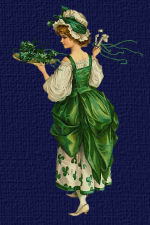 Up until the mid-nineteenth century, most Irish immigrants in America were members of the Protestant middle class. When the Great Potato Famine hit Ireland in 1845, close to a million poor, uneducated, Catholic Irish began to pour into America to escape starvation. Despised for their religious beliefs and funny accents by the American Protestant majority, the immigrants had trouble finding even menial jobs. When Irish Americans in the country 's cities took to the streets on St. Patrick's Day to celebrate their heritage, newspapers portrayed them in cartoons as drunk, violent monkeys.
Up until the mid-nineteenth century, most Irish immigrants in America were members of the Protestant middle class. When the Great Potato Famine hit Ireland in 1845, close to a million poor, uneducated, Catholic Irish began to pour into America to escape starvation. Despised for their religious beliefs and funny accents by the American Protestant majority, the immigrants had trouble finding even menial jobs. When Irish Americans in the country 's cities took to the streets on St. Patrick's Day to celebrate their heritage, newspapers portrayed them in cartoons as drunk, violent monkeys.However, the Irish soon began to realize that their great numbers endowed them with a political power that had yet to be exploited. They started to organize, and their voting block, known as the "green machine," became an important swing vote for political hopefuls. Suddenly, annual St. Patrick's Day parades became a show of strength for Irish Americans, as well as a must-attend event for a slew of political candidates. In 1948, President Truman attended New York City 's St. Patrick's Day parade, a proud moment for the many Irish whose ancestors had to fight stereotypes and racial prejudice to find acceptance in America.
- Wearing of the Green Goes Global
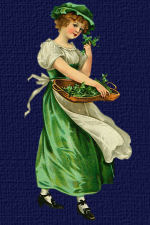 Today, St. Patrick's Day is celebrated by people of all backgrounds in the United States, Canada, and Australia. Although North America is home to the largest productions, St. Patrick's Day has been celebrated in other locations far from Ireland, including Japan, Singapore, and Russia.
Today, St. Patrick's Day is celebrated by people of all backgrounds in the United States, Canada, and Australia. Although North America is home to the largest productions, St. Patrick's Day has been celebrated in other locations far from Ireland, including Japan, Singapore, and Russia.In modern-day Ireland, St. Patrick's Day has traditionally been a religious occasion. In fact, up until the 1970s, Irish laws mandated that pubs be closed on March 17. Beginning in 1995, however, the Irish government began a national campaign to use St. Patrick's Day as an opportunity to drive tourism and showcase Ireland to the rest of the world. Last year, close to one million people took part in Ireland 's St. Patrick's Festival in Dublin, a multi-day celebration featuring parades, concerts, outdoor theater productions, and fireworks shows.
![]()
![]()
![]()
May you always have faith in unseen treasures,
and may the blessings of the day bring luck, love and laughter.
An Irish Wish
May you always have...
A sunbeam to warm you,
Good luck to charm you,
And a sheltering angel
So nothing can harm you,
Laughter to cheer you,
Faithful friends near you,
And whenever you pray,
Heaven to hear you.
![]()
![]()
![]()
![]()
![]()
![]()
![]()
Shekinah created and maintained by Lady Elizabeth
Web set designed by Moon and Back Graphics
Shekinah is hosted by Elysium Gates
![]()
![]()
![]()
